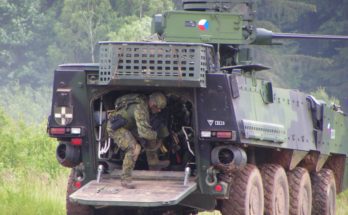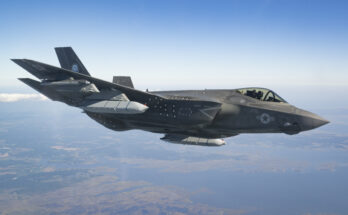For a comprehensive view of the impact of the B-21 Raider, Conference Appropriations Bill Air Force Aircraft Funding is a good place to start. B-21 Raider funding is ramping up right now, pushing total combat aircraft funding above recent historical trends.


What is the history of the B-21 Raider?
In October 2015, the U.S. government awarded Northrop Grumman a contract for the Air Force’s B-21 long-range strike bomber. That contract was separated into two parts — the first part covers a cost-plus-incentive-fee contract for engineering and manufacturing development, and the second part will cover the first five lots of low-rate initial production aircraft. Those 21 aircraft will be purchased using a fixed-price-incentive-fee agreement.
Though most details of the program are classified, the Pentagon did announce that seven major contractors assisted Northrop Grumman in building the B-21 — Pratt & Whitney, BAE Systems, GKN Aerospace, Janicki Industries, Orbital ATK*, Rockwell Collins, and Spirit AeroSystems.
On December 2, 2022, Northrop Grumman unveiled the B-21 Raider, named in honor of the Doolittle Raid of World War II, in a ceremony at the Air Force’s Plant 42 production facility.
What do future plans look like for the B-21 Raider?
Currently, plans call for the procurement of 100 bombers, but the program could be expanded. In 2020, the Air Force increased the number of aircraft it wants to acquire across its entire bomber force by 2040 from 175 aircraft to over 220. The Air Force is still determining whether the added requirement will be met by procuring additional B-21s or by maintaining a larger number of legacy bombers. For now, 100 B-21s is generally viewed as the lower limit of what the Air Force will eventually procure.
The Air Force has outlined $19.1 billion in development costs, according to FY23 budget documents. The FY23 budget contains the first allotment of procurement funding for the program, some $1.4 billion plus $353 million for advance procurement. A total of $19.4 billion has been set aside for procurement through FY27, but the Air Force has not revealed how many aircraft that level of funding will procure. Independent estimates projected that the unit cost of each bomber will be $511 million in 2010 dollars for 100 aircraft, lower than the Air Force’s $550 million target. The projected unit cost translates to around $660 million in 2022 dollars.
The first flight was anticipated in December 2021 but has since been moved to 2023. The new date is still within the parameters of the original program baseline, however, so the program is still considered on schedule. As of September 2022, six aircraft were under construction.
*On June 6, 2018, Northrop Grumman Corporation announced it closed the acquisition of Orbital ATK Inc.
Want to keep up with defense budget changes?
Forecast International’s U.S. Defense Budget Forecast makes it easy to navigate the latest U.S. defense budget. The product features sorting and data visualization options and presents the entire Future Years Defense Program (FYDP) through an online interface with downloadable spreadsheets. This is the go-to service for anyone looking to save time and energy in navigating the massive Department of Defense budget.
Shaun's deep-rooted interest in military equipment continues in his role as a senior defense analyst with a focus on the United States. He played an integral role in the development of Forecast International's U.S. Defense Budget Forecast, an interactive online product that tracks Pentagon acquisition programs throughout the congressional budget process. As editor of International Military Markets – North America, Shaun has cultivated a deep understanding of the vast defense markets in the United States and Canada. He is a regular contributor to Forecast International's Defense & Security Monitor blog and has co-authored white papers on global defense spending and various military programs.




